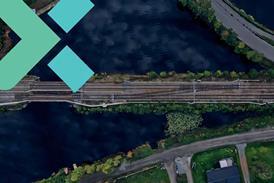Close menu
- Home
-
News
- Back to parent navigation item
- News
- Traction and rolling stock
- Passenger
- High speed
- Freight
- Infrastructure
- Policy
- Technology
- Ticketing
- Business
- Research, training and skills
- Accessibility and inclusion
- People
- Urban rail news
- Suburban and commuter rail
- Metro
- Light rail and tram
- Monorail and peoplemover
- Regions
- InnoTrans
- In depth
- Events
- Data
- Maps
- Tenders & Jobs
- Sponsored content
- Insights
CPK – an ambitious Polish mobility project in the heart of Europe
Sponsored by CPK2023-04-18T14:07:00

By 2028 the new airport in the centre of Central and Eastern Europe is expected to have a capacity of 40 million passengers per year. Mikołaj Wild, President of Centralny Port Komunikacyjny, is to talk about the progress of CPK, new contracts and innovative concepts undertaken with international partners at the Passenger Terminal Expo.
Already have an account? LOG IN
To continue…
You’ve reached your limit of content for the month














